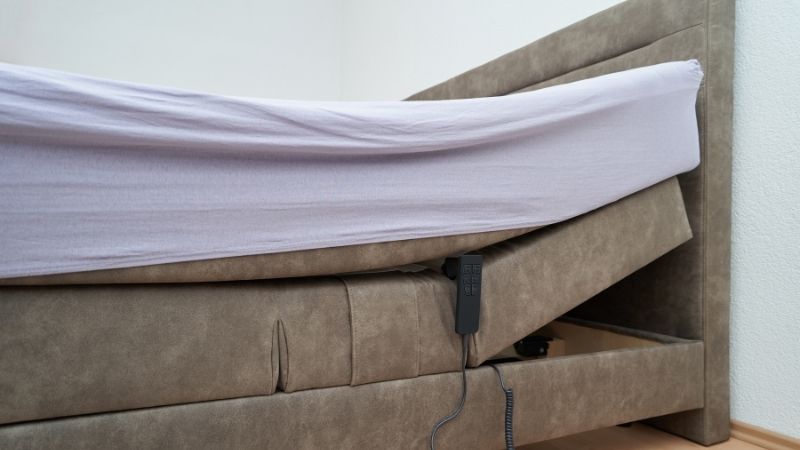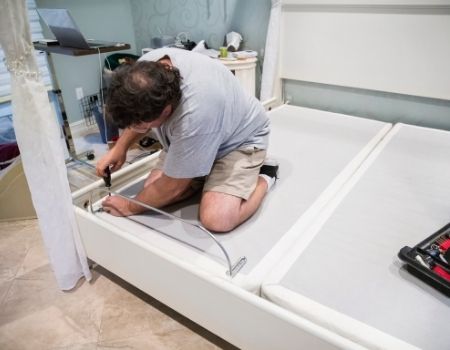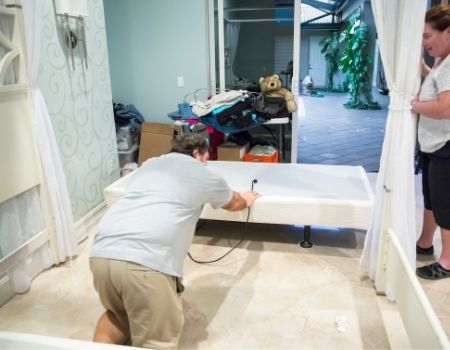The Correct Way to Move and Store a Sleep Number Mattress

When you bought your sleep number bed, you probably wondered to yourself how to move and store it.
But since you’ve invested in a Sleep Number bed, you are going to have it for quite some time. Unlike a traditional mattress that has a 6- to 10-year lifespan, a Sleep Number bed should last a minimum of 15 years, according to their website.
That means if you’re relocating, you’re going to want to take it with you, and either utilize storage or move it into your new abode. It’s definitely more complicated to move than a traditional mattress, and there are a few specific steps to follow. With that in mind, we’ve created this guide with important do’s and don’ts to help you correctly pack, move and store your bed.
5 steps to pack, move and store a Sleep Number bed:
- Deflate the air chambers
- Disassemble the mattress
- Pack up the mattress
- Disassemble the base
- Store in a temperature-controlled environment
1. Deflate the air chambers
The first step to pack your Sleep Number bed is to deflate it. Press the down arrow on the controller until it reads zero. If there are two air chambers, you’ll need to hold down the arrow for each chamber (left and right).
Do: use the deflation controller.
Don’t: use a knife.
2. Disassemble the Mattress

While your mattress is in a flat position, unzip the zipper. Depending on what model Sleep Number bed you have, there could be one or two zippers. Unzip the bottom zipper (along the bottom edge of the mattress).
Next, push the gray tab on the side of your mattress to gently pull out the hose, and repeat on the other side. Some models will have more than one hose per chamber, so make sure you take out all of them.
You’ll want to take out all internal pieces including the air chambers, corner locks and foam pads. Then, unplug the control system from the wall.
Do: take pictures at each step to make reassembling your mattress much easier.
Don’t: leave any components in the mattress. (It will be more difficult to store, and can possibly damage the mattress.)
3. Pack it All Up!
Once you have all components out of the mattress, it’s time to pack everything away. Roll or fold the mattress cover, put it in a storage bag, then place the storage bag in a plastic tote. You can also roll the air chambers and foam padding. Put all other mattress parts in a box or bin with packing materials.
Do: pack the pump and control system securely with plenty of packing materials in a separate box.
Don’t: let the pump jostle and shift around while moving.
4. Disassemble the Base

Disassembling the base differs depending on what kind of base you have. It’s a good idea to reference manufacturer’s instructions to take apart your mattress base, or check with Sleep Number support if you have any questions.
A modular base can be disassembled easily. Push decking panels to the side to get them off the frame. If you have a full, queen or king size mattress, remove the center beam and side panels. You can also detach the legs.
If you own a FlexFit base, there are additional steps to follow. First, you’ll need to remove the mattress retainers with a 7/16 hex head bolt. Then slide out the decking panels and unplug the control system. If you have a king size bed, you’ll also need to remove the bed straps. To do this, simply loosen the two inside legs, remove the straps and screw them back in. Remove the straps at the head and foot of the bed.
Once you have disassembled the base, be sure to put all hardware in a bag to avoid losing pieces. Pack the base control system securely in a box (if applicable).
Do: carefully wrap all side panels to prevent scratches and damage.
Don’t: completely remove the legs of a FlexFit base.
5. Store Your Sleep Number Mattress In a Temperature Controlled Environment
After you’ve gone through the process to safely pack your Sleep Number bed, it’s important to carefully store it!
Many of the components of your bed are light and easy to move in boxes and bins. But, if you have a heavier base, be sure to seek help from a friend.
When it comes to storing your mattress, the ultimate protection from any damage is a climate-controlled storage unit. These units have regulated temperature to mitigate damage from humidity.
Do: consider a temperature-regulated storage unit to keep your bed protected.
Don’t: store your bed in a humid environment with severe temperature changes.
Concluding: How to Move and Store a Sleep Number Bed
After finding the perfect bed, we understand it’s important to learn how to move and store it correctly. We hope these simple steps and tips have given you the guidance you were looking for.
Climate-controlled storage is your mattress’ best defense against damage from humidity. If you’re ready to find a storage unit for your Sleep Number bed, use our storage location finder to locate your nearest Store Space Facility.
We care about a good night’s sleep (and keeping your mattress safe in storage)!







